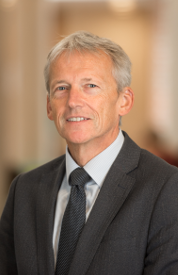Artists will be able to create their own holograms with the help of world-leading imaging scientists at a pioneering hybrid research centre.
Glyndŵr University is opening a major new centre – the Centre for Ultra-Realistic Imaging – to allow artists to work side-by-side with research scientists.
The centre, which is based at Wrexham, sees the university team up with industrial partner Geola, an Anglo-Lithuanian holographics and laser manufacturer. It will carry out cutting-edge research in applied photonics, imaging and holography and will allow students to routinely produce holograms using the latest and most advanced technology.
Dr Ardie Osanlou, Reader in Engineering and Applied Science and head of the centre, said: “We’re extremely proud of Glyndŵr University’s strength in the field of holography and imaging and expect to attract postgraduate students from both applied photonics and the visual arts from across the world.”
Geola bought the assets of St Asaph technology firm View Holographics in late 2014 and has donated them to Glyndŵr University.
The equipment is valued at more than £1m and includes a highly advanced digital holographic printer.
Research at the Centre for Ultra-Realistic Imaging will concentrate on full-colour digital holographic printing, ultra-realistic analogue holography, and modern optics with MA, MSc and PhD students placed at the facility.
Ardie added: “The collaboration between art and science is certainly unique and has been made possible by the university’s expertise within both fields.
“The centre is already attracting significant interest from students and commercial partners.”
Thanks to the donation from Geola, the facility will become the only academic centre in the world to have a large format, full-colour pulsed-laser digital holographic printer capable of printing on to glass sheets 1m x 1m.
This unique asset will not only allow the everyday creation of unique and extraordinary art or architectural holograms, but will allow Glyndŵr to develop key scientific technologies.
The centre is also being designed to inspire a new generation of optoelectronic scientists and is set to offer simple holographics courses for school children.
Glyndŵr University has built a world-leading reputation in the field of holography since establishing the Centre for Modern Optics in St Asaph in 2003.
It later added the Centre for Laser Photonics to its research facilities and the new Centre for Ultra-Realistic Imaging will combine the equipment, technology and personnel of both of these centres with the equipment and technology donated by Geola.
Interim Glyndŵr University Vice-Chancellor Graham Upton officially approved the new centre on the June 26 2015, backed by head of engineering Phil Storrow.
Professor Hans Bjelkhagen and Professor David Brotherton-Ratcliffe, two of the most significant scientists in the coherent imaging science industry, will teach at the centre.
“It’s vitally important that we have elite academics to support such a flagship research centre and in Hans and David we have this,” said Ardie.
“The application of holographics to everyday life is extensive, and the centre will also undertake research into auto-stereoscopic display systems, haptic/acoustic holography, real-time holographic displays and the theory of diffraction.
“We expect scientific applications of this work in areas such as medical imaging, laser engineering, 3D television, virtual reality and virtual telepresence.”
Any interested commercial partners or students should contact Dr Ardie Osanlou on a.osanlou@glyndwr.ac.uk orardieosanlou@aol.com
Read more about the new research centre, here.


Recent Comments